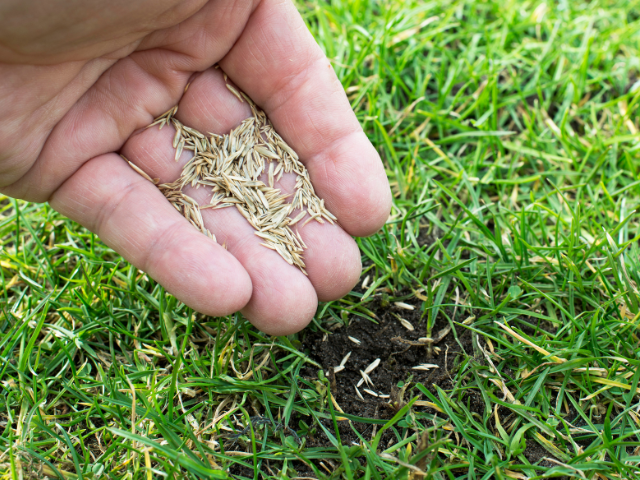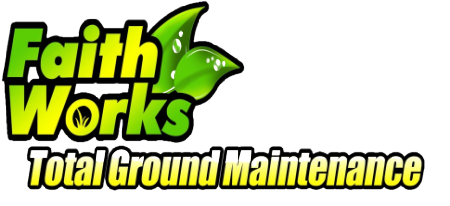Maintaining a healthy lawn during the winter in Florida can be daunting; however, our lawns are in better shape than our northern family and friends. Below are a few tips to follow to help you protect your grass and keep your lawn healthy throughout the winter months:
- Mow the lawn regularly to prevent grass from becoming too tall and dormant.
- Water the lawn deeply and infrequently to prevent root damage.
- Apply a winter fertilizer to provide essential nutrients for the lawn.
- Clear any fallen leaves, branches, or debris from the lawn.
- Avoid walking on the lawn if frozen (during a drastic cold front), as this can damage the grass.
- Aerate the soil to help improve water, air, and nutrient absorption.
- Avoid over-irrigating or watering at night, which can cause fungal growth.
Following these tips can help keep your lawn healthy and green during the winter months, but there is still a chance that your grass can die. So, you have to take special care this time of year.
What is the best type of fertilizer to protect winter grass?
The best type of fertilizer to use to protect your grass in the winter depends on the specific needs of your lawn and the time of year. During the winter in Florida, we recommend you use a slow-release winter fertilizer with a balanced ratio of nitrogen, phosphorus, and potassium (such as a 16-4-8 or 18-0-6).
Slow-release fertilizers release nutrients gradually over time, providing a sustained source of nutrition for the lawn. The balanced ratio of NPK (nitrogen, phosphorus, potassium) helps promote overall health and growth.
It is also essential to follow the instructions on the fertilizer packaging, as applying too much fertilizer can harm the lawn and the environment. A soil test can also help determine which fertilizer is best for your lawn.
What brands of fertilizer do you recommend?
Information on a few well-known fertilizer brands used in the market is below:
Scotts: Scotts is a famous brand that offers a range of fertilizers for different seasons and lawn types.
Milorganite: Milorganite is a slow-release organic fertilizer made from heat-dried microbes.
Lesco: Lesco is a professional-grade fertilizer brand that offers a variety of products for different seasons and lawn types.
EverGreen: EverGreen is a famous brand that offers a range of fertilizers, including a winter fertilizer for use in Florida.
Miracle-Gro: Miracle-Gro is a well-known brand that offers a range of fertilizers for different seasons and lawn types.
These are just a few examples of popular fertilizer brands. It’s always recommended to research and compare products, read the label carefully, and follow the instructions for the best results.
I’ve protected my grass, and it still turned brown

Protect your grass in the winter.
So, your grass turned brow even though you did all you could to protect your grass in the winter, and it appears to be dead, it’s likely due to stress caused by one of the following factors:
Drought: Grass can turn brown if it’s not getting enough water. If the soil is dry, water the lawn generously to help revive it.
Over-fertilization: Over-fertilization can cause fertilizer burn, which turns grass brown. Reduce the amount of fertilizer you apply, and follow the instructions on the label.
Disease: Brown patches on the lawn can also signify disease, such as fungal infection. If you suspect disease, it’s best to consult a lawn care specialist.
Pests: Pests, such as grubs, can also damage the lawn and cause brown patches. If you suspect pests, it’s best to consult a lawn care specialist.
Excessive Traffic: If an area of your lawn is frequently walked on or used for play, it can become compacted and turn brown. Aerating the soil can help improve air and water absorption and revive the grass.
If the brown grass is dead, it will not recover. You can either remove the dead grass and re-seed the area or wait until spring to aerate the soil and over-seed the lawn. In either case, it’s essential to address the underlying cause of the stress to prevent it from happening again.
Can you re-seed St. Augustine grass?

Re-seeding grass to protect your grass
Re-seeding St. Augustine grass is possible, but it’s less common than re-seeding other types of grass because St. Augustine is a warm-season grass that spreads by runners (stolons) to fill in bare or thin areas. St. Augustine grass generally is relatively low-maintenance and can recover from stress or damage.
If you have a significant area of bare or thin grass, overseeding with a compatible grass seed may be necessary. Before overseeding, it’s crucial to prepare the soil properly, remove dead grass, and ensure it is moist. After overseeding, be sure to water regularly to promote seed germination.
Most importantly, it’s also important to note that overseeding with a different grass seed may result in an uneven lawn and create compatibility issues between the two types of grass. It’s always best to consult with a lawn care specialist or local nursery for advice on overseeding specific to your lawn and location.
Faithworks Total Ground Maintenance, LLC would love to assist you with protecting your grass in the winter. Give us a call, and let us help you get through this winter with a beautiful, healthy lawn. Check out our previous post on mulching!
